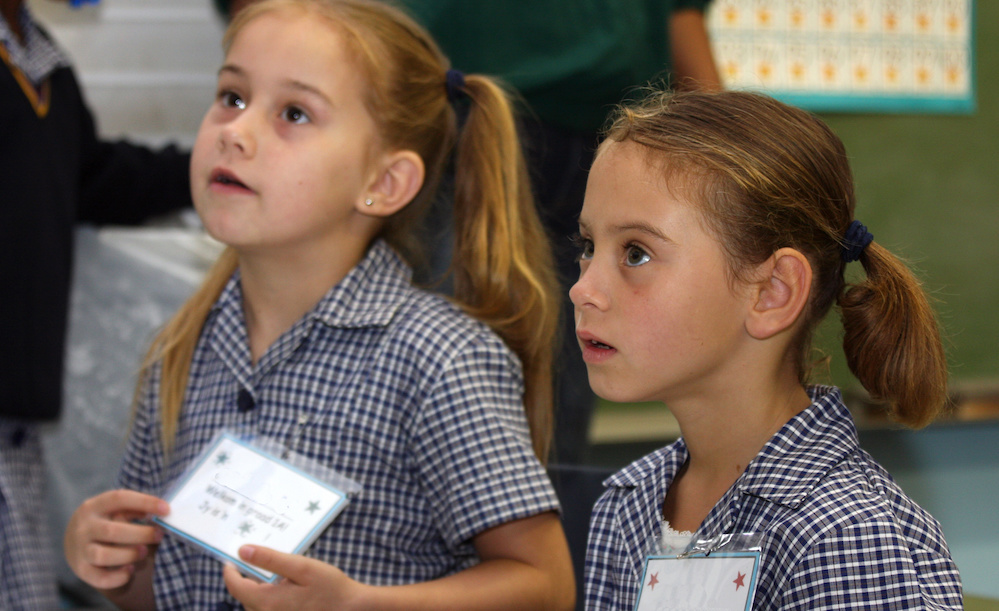Out of school hours care in the digital age

Before and after school care in the digital age: should out of school hours care be made to suit the children of the digital revolution or is it a chance for schools to provide a program where children disconnect from technology and connect with life?
We all know that childhood is different in the digital age. The challenge facing parents, schools and educators is to blend the best part of pre-digital childhood with the benefits of the digital age. Research findings indicate that there is still work to do. So how do we get the balance right?
Over the past decade, we’ve seen the development, and subsequent market domination of smart phones, tablets, gaming consoles and wireless internet. These technological advances were instrumental in the explosion of social media platforms like Facebook and Instagram. They have reinvented the way we interact with videos, music and books via an array of download and streaming sites and apps. While the advantages of technology are easy to see, left unmanaged, the array of negative effects could reach epidemic levels.
Schools have a responsibility to prepare children for the future, and technology is a key component of that. In a world in which ‘extelligence’ is growing at an exponential rate, teaching children to use it well may be more important than intelligence. Extelligence is a term coined by author and scholar Ian Stewart, referring to the cultural capital available in the form of external media. Extelligence contrasts with intelligence, that is, the knowledge and cognitive processes within the brain.
Children can benefit from interactive programs and apps, as well as those based around music, movement and stories. Technology is a draw-card for children. Television, computer games and internet sites are colourful, loud and enticing and it’s easy for children to feel the lure of technology to relieve their boredom. Unfortunately, technology can also be used for purposes other than the pursuit of knowledge, and the consequences of its misuse are broad.
The time children spend immersed in technology – or screen time – currently outweighs the time they spend doing physical activities. Across society, lifestyles are more sedentary, and the incidence of obesity, especially in children, is rapidly increasing. According to the 2011-12 Australian Health Survey conducted by the Australian Institute of Health and Welfare, the number of children that are overweight has doubled in recent years, with approximately 25 percent of children considered overweight or obese at the time of reporting.
[pro_ad_display_adzone id=”5852″ align=”left” padding=”3″]The same report indicated that children who spend more than three hours a day on screen time are more likely to be overweight and physically less active; sleep less, drink more sugar drinks and snack foods high in sugar, salt and fat; have fewer social interactions, and underachieve at school.
There is a time and place for technology, and it should not replace reading, writing, playing or problem-solving activities for children. Educators must promote, encourage and make space for ‘unplugged learning’ and play to help develop these crucial skills.
Getting the Balance Right
Embracing the benefits of technology doesn’t mean that a culture of unregulated screen time is advised. Screen-free time allows children to learn through experience, play and adventure, rather than through a screen. In our busy modern existence, parents struggle to find opportunities for unstructured physical play, so they turn to organised sports. While the physical health benefits of sports are significant, structured sporting activities, particularly competitive ones, cannot approximate unstructured or free play.
Free play allows exploration and promotes self-directed expansion of physical and mental capabilities. Unstructured play is a serious business, and until a generation ago, children were learning life skills like negotiation, compromise, leadership and teamwork in a variety of circumstances and often from a number of perspectives.
It is, perhaps, a little ironic that after school care, which a generation ago was regarded by children as restrictive, is now one of the best opportunities a child has for free play. This is not to say that it is unstructured chaos, or a longer version of lunch time. Quality after school care does provide children with a safe ‘no screen’ environment, in which they are encouraged to explore their own ideas as well as new things. After school care is not what it used to be; it delivers a safe, reliable and nurturing environment for kids to play and grow and it definitely makes kids smile – that is why we do it.







